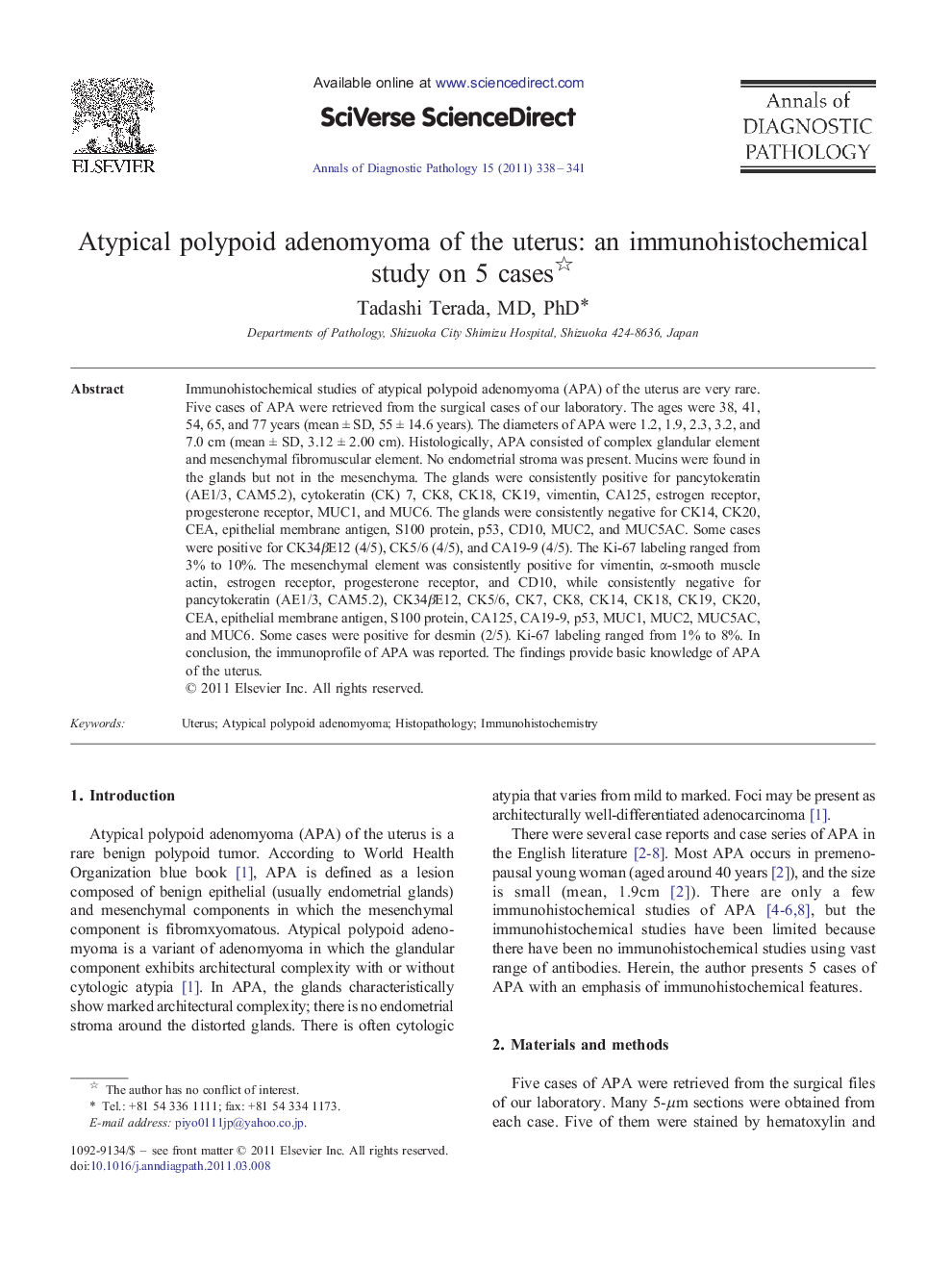| Article ID | Journal | Published Year | Pages | File Type |
|---|---|---|---|---|
| 4130101 | Annals of Diagnostic Pathology | 2011 | 4 Pages |
Immunohistochemical studies of atypical polypoid adenomyoma (APA) of the uterus are very rare. Five cases of APA were retrieved from the surgical cases of our laboratory. The ages were 38, 41, 54, 65, and 77 years (mean ± SD, 55 ± 14.6 years). The diameters of APA were 1.2, 1.9, 2.3, 3.2, and 7.0 cm (mean ± SD, 3.12 ± 2.00 cm). Histologically, APA consisted of complex glandular element and mesenchymal fibromuscular element. No endometrial stroma was present. Mucins were found in the glands but not in the mesenchyma. The glands were consistently positive for pancytokeratin (AE1/3, CAM5.2), cytokeratin (CK) 7, CK8, CK18, CK19, vimentin, CA125, estrogen receptor, progesterone receptor, MUC1, and MUC6. The glands were consistently negative for CK14, CK20, CEA, epithelial membrane antigen, S100 protein, p53, CD10, MUC2, and MUC5AC. Some cases were positive for CK34βE12 (4/5), CK5/6 (4/5), and CA19-9 (4/5). The Ki-67 labeling ranged from 3% to 10%. The mesenchymal element was consistently positive for vimentin, α-smooth muscle actin, estrogen receptor, progesterone receptor, and CD10, while consistently negative for pancytokeratin (AE1/3, CAM5.2), CK34βE12, CK5/6, CK7, CK8, CK14, CK18, CK19, CK20, CEA, epithelial membrane antigen, S100 protein, CA125, CA19-9, p53, MUC1, MUC2, MUC5AC, and MUC6. Some cases were positive for desmin (2/5). Ki-67 labeling ranged from 1% to 8%. In conclusion, the immunoprofile of APA was reported. The findings provide basic knowledge of APA of the uterus.
